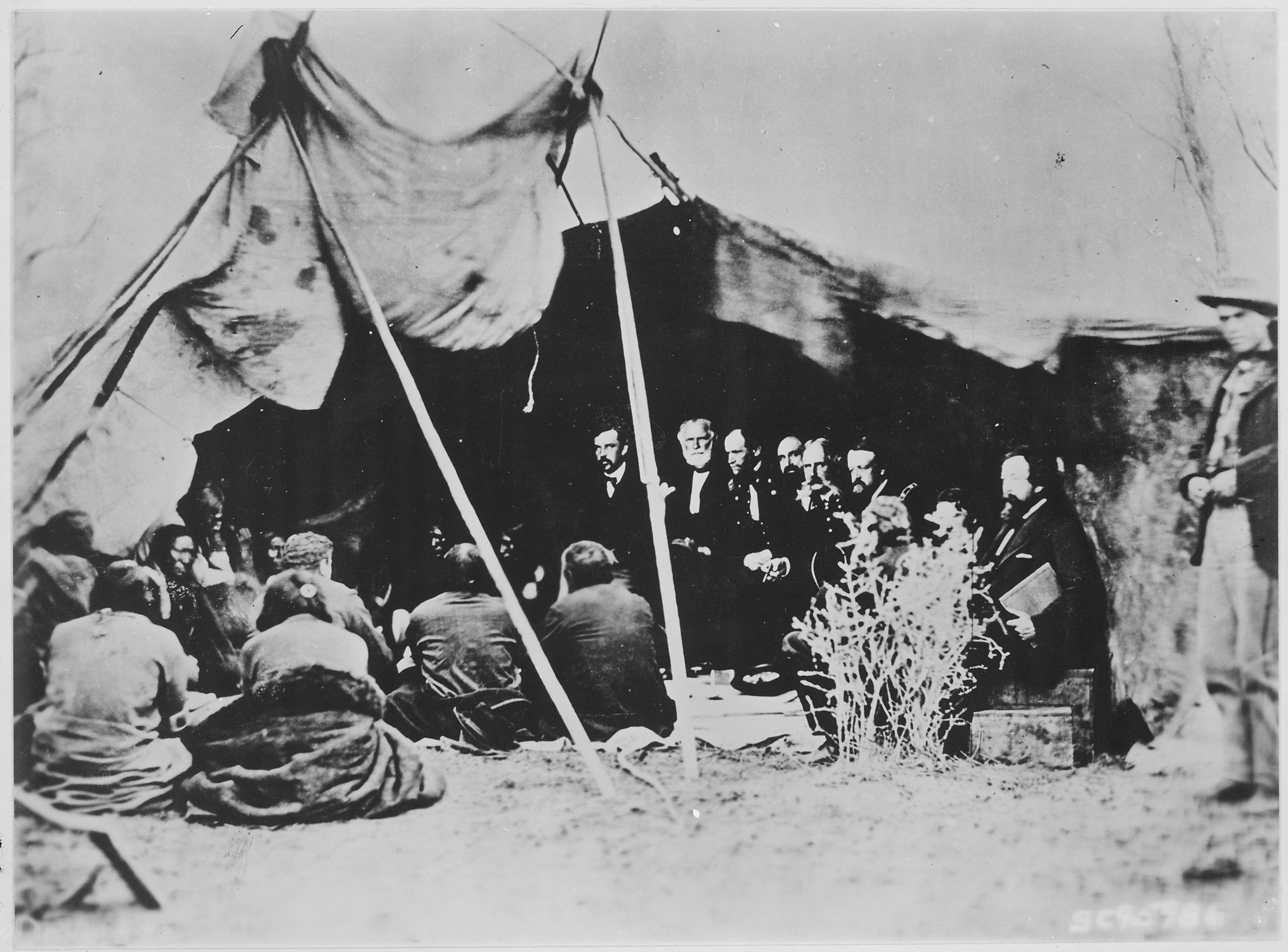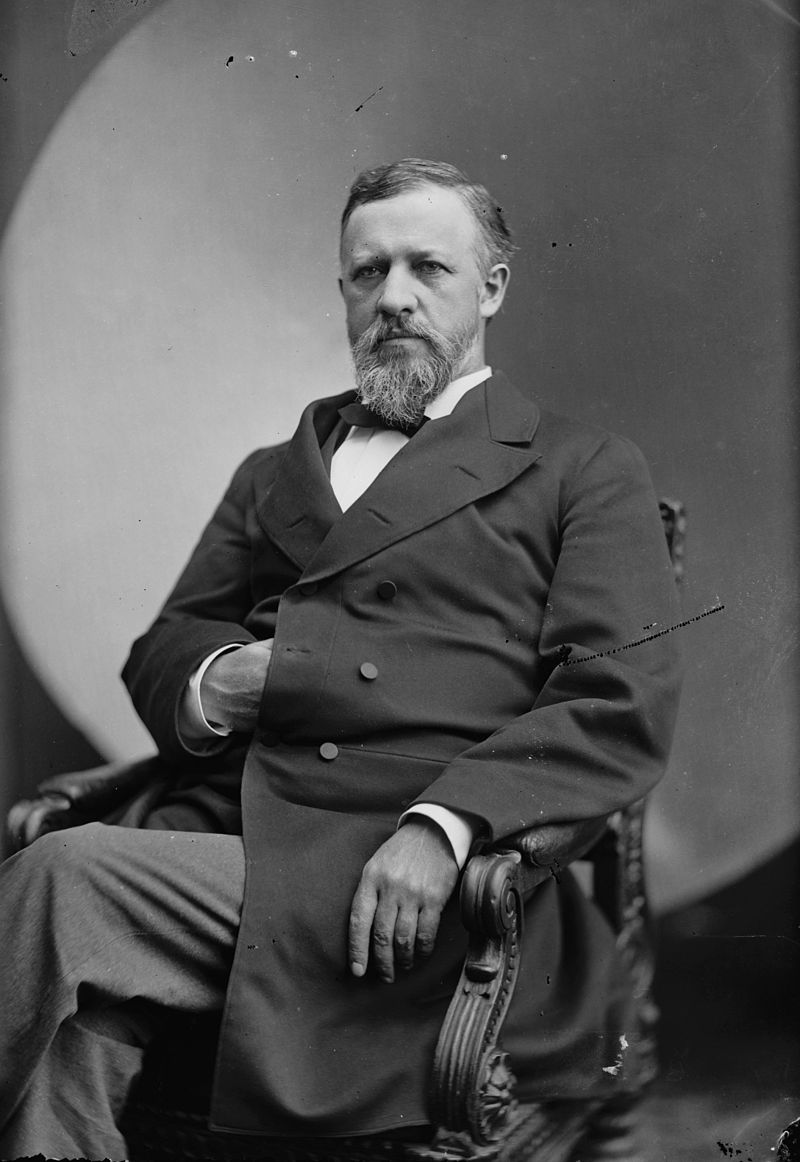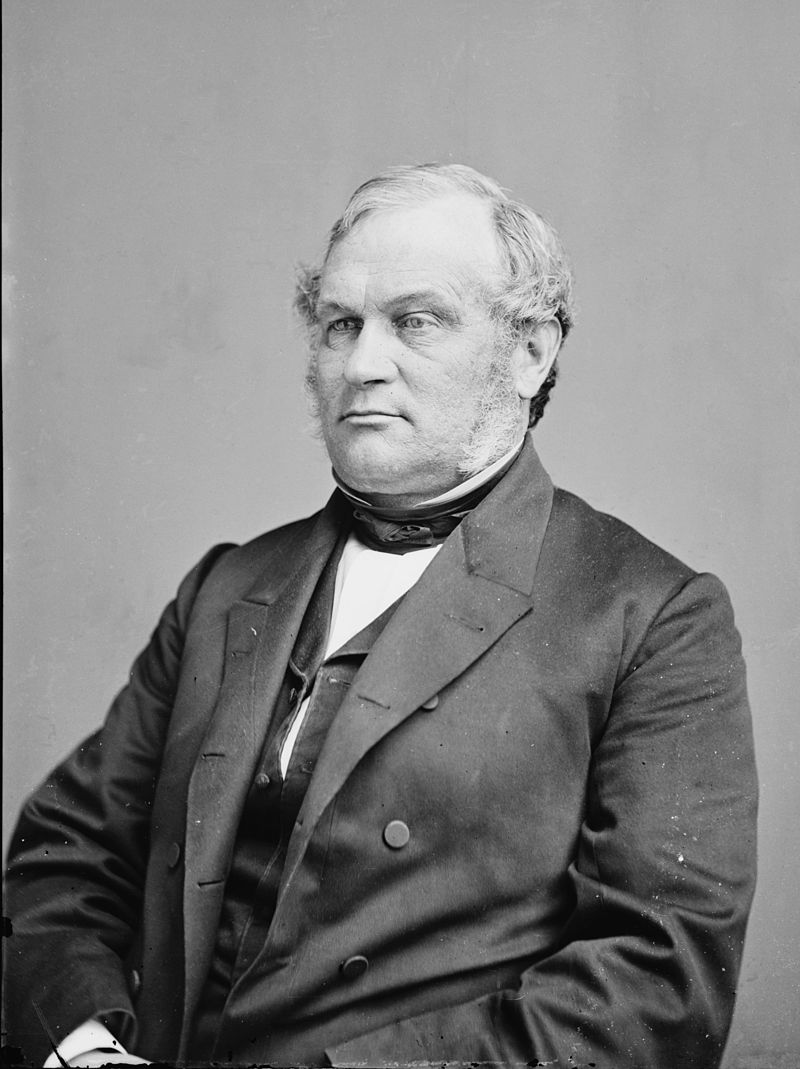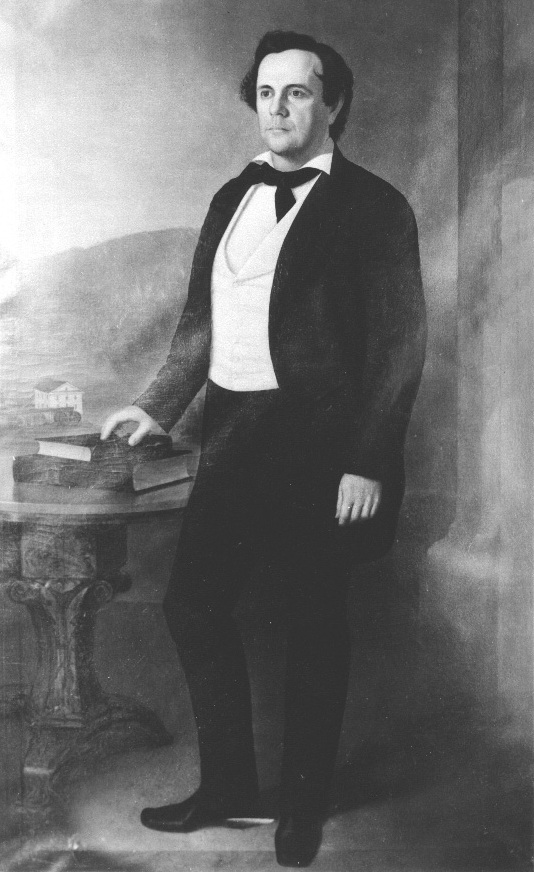The Civil War was not the only armed conflict that engaged the US during the 1860s. US policies throughout the decade antagonized Indigenous nations, resulting in wars throughout the west. Corruption and mismanagement in the Bureau of Indian Affairs sparked the
Dakota War of 1862. Though that war ended quickly, resistance to US expansion spread throughout the plains as white emigration to the Pacific Northwest continued to increase. With the secesion of the South, northern industrialists agressively pushed for the construction of a railroad through Indigenous territories in heavyhanded treaties that were often fraudulent. With the discovery of gold in Idaho, an old pattern was repeated: miners invaded Indigenous territories by the thousands and a US military presence followed. Relations were also exacerbated by the US policy of confining Indigenous nations to reservations, in effect turning their homelands into concentration camps. the secesion of the South, northern industrialists agressively pushed for the construction of a railroad through Indigenous territories in heavyhanded treaties that were often fraudulent. With the discovery of gold in Idaho, an old pattern was repeated: miners invaded Indigenous territories by the thousands and a US military presence followed. Relations were also exacerbated by the US policy of confining Indigenous nations to reservations, in effect turning their homelands into concentration camps.
Men who negotiated and witnessed treaties in this final period of the treaty-making era included railroad executives, owners of newly-formed mining companies, and military officers, some of whom were the authors of famous massacres. In the last half of the decade, members of itinerant Peace Commissions wandered the west, attempting to address the consequences of these conflicts.
Railroad Treaties, 1860-1868
 In the 1860s railroad companies entered their ascendancy, exploiting political networks to combine transportation and land speculation. Some treaties in this decade read like advertisements for the railroad companies that engineered them. US commissioners and signers of these treaties included Thomas Gladding and Thomas Ewing, Jr. (directors of the Leavenworth, Pawnee and Western Railroad); George A. Reynolds (director of the Leavenworth, Lawrence and Fort Gibson Railroad); H. W. Farnsworth (director of the Atchison and Topeka Railroad); Charles B. Keith, who was described as “a minion of the railroads;” and Thomas Sykes, who secured power of attorney for the Delaware to further the interests of railroad interests. The Indian Affairs bureaucracy in this period was also remarkably corrupt. Commissioner of Indian Affairs William Dole and and Indian agent Luther Palmer acquired and speculated in the ceded lands. Agent Douglas H. Cooper misappropriated $134,000 dollars from the Choctaw before joining the Confederacy. In the 1860s railroad companies entered their ascendancy, exploiting political networks to combine transportation and land speculation. Some treaties in this decade read like advertisements for the railroad companies that engineered them. US commissioners and signers of these treaties included Thomas Gladding and Thomas Ewing, Jr. (directors of the Leavenworth, Pawnee and Western Railroad); George A. Reynolds (director of the Leavenworth, Lawrence and Fort Gibson Railroad); H. W. Farnsworth (director of the Atchison and Topeka Railroad); Charles B. Keith, who was described as “a minion of the railroads;” and Thomas Sykes, who secured power of attorney for the Delaware to further the interests of railroad interests. The Indian Affairs bureaucracy in this period was also remarkably corrupt. Commissioner of Indian Affairs William Dole and and Indian agent Luther Palmer acquired and speculated in the ceded lands. Agent Douglas H. Cooper misappropriated $134,000 dollars from the Choctaw before joining the Confederacy.
Restricted Western Reservations, 1861-1865
In addition to agreements engineered for the direct benefit of specific railroads, a number of treaties in the west in the 1860s focused on securing other US trade and wagon-train routes. These treaties involved sometimes vast land cessions from Indigenous nations, generally restricted the movement of Indigenous people within reservation boundaries, and in most cases led to continued armed conflict. S. D. Howe, one of the incorporators of the Northern Pacific Railroad, “negotiated” a particularly onerous treaty with the Nez Perce after gold was discovered on their reservation. Signers of treaties with the Shoshoni and Utes included James Duane Doty, Wisconsin’s most active land speculator and ex-governor, who had been appointed Governor of Utah Territory; P. E. Conner, who had conducted the Bear River Massacre months before signing treaties; and John Chivington, who would conduct the Sand Creek Massacre a year after his treaty-signing. In the Pacific Northwest, treaties were signed by members of the aggressive Oregon and Washington militias.
Ojibwe and Minnesota, 1860s
In 1862, Dakota people and
Minnesota militia engaged in the Dakota conflict. Following a statement by Governor Alexander Ramsey that the Dakota should be exterminated, a punitive expedition co-led by Henry Sibley hunted Dakota people into the Dakotas. Ex-Governor Alexander Ramsey capitalized on this military presence to secure cessions from the Ojibwe in 1863 of a large territory along both banks of the Red River, and
of reservations held throughout the State. (Both treaties were re-negotiated the following year.) Signers included corrupt Bureau of Indian Affairs officials: Comissioner William Dole and Indian agents Ashley Morrill, Clark Thompson and his brother Benjamin, who speculated in land, pocketed annuity payments and represented the interests of timber and railroad companies. Other “Indian traders,” and timber company executives also witnessed the treaties. After a false gold strike at Lake Vermillion in 1866, political and financial leaders in Minnesota pressured a land cession from the Bois Fort Ojibwe; no actual gold was found by the armies of settlers that invaded the area, but men such as Henry Sibley incorporated gold mining companies that attracted eastern capital. In 1867, the White Earth reservation was created in a treaty that US negotiators intended as the home of all Ojibwe people within the State’s boundaries. One of the signers became at agent an White Earth and fraudulently extracted millions of board feet of timber from the reservation. both banks of the Red River, and
of reservations held throughout the State. (Both treaties were re-negotiated the following year.) Signers included corrupt Bureau of Indian Affairs officials: Comissioner William Dole and Indian agents Ashley Morrill, Clark Thompson and his brother Benjamin, who speculated in land, pocketed annuity payments and represented the interests of timber and railroad companies. Other “Indian traders,” and timber company executives also witnessed the treaties. After a false gold strike at Lake Vermillion in 1866, political and financial leaders in Minnesota pressured a land cession from the Bois Fort Ojibwe; no actual gold was found by the armies of settlers that invaded the area, but men such as Henry Sibley incorporated gold mining companies that attracted eastern capital. In 1867, the White Earth reservation was created in a treaty that US negotiators intended as the home of all Ojibwe people within the State’s boundaries. One of the signers became at agent an White Earth and fraudulently extracted millions of board feet of timber from the reservation.
Other Civil War Era Treaties, 1861-1865
Five treaties coinciding with the Civil War involved reservation lands in Kansas and Nebraska. A month before the War began in 1861, the once-vast Great Nemaha reservation on the Kansas-Nebraska border was reduced in the last of a series of land cession treaties. Traders John and Harvey Forman, signers of the treaty, later incorporated the town of Doniphan, Kansas on the ceded land. In 1862 the Ottawa in Kansas ceded their reservation for compensation that included funds for education; US treaty signer C. C. Hutchinson and Ottawa signer John T. Jones then colluded in the formation of the fraudulent Ottawa University. Months before the Civil War officially ended in 1865, a series of treaties in Washington, DC resulted in land cessions by the Omaha, Ponca and Ho-Chunk, and their consolidation in a single reservation in northeast Nebraska. Signers of these treaties included the corrupt Commissioner of Indian Affairs, William P. Dole, and his nephew Stephen; corrupt Indian agent Clark Thompson; Charles Sims, a Missouri lawyer who spent the war in the east engaged in Wall Street speculation; J. N. H. Patrick, a director of the Union Pacific Railroad; and the speculator/banker Augustus Kountze, who was on his way to vast fortunes in timber, land and banking. In another Civil War treaty, parts of the Isabella Reservation in Michigan were ceded by the Saginaw band of the Ojibwe in 1864; treaty signer C. H. Rodd, a supervisor of the nearby town of Isabella, later bribed a Congressman to sponsor legislation that supported his spurious claim to 12,000 acres of Michigan land.
Civil War End Treaties, 1865-1868
In the aftermath of the Civil War, the US signed treaties to reestablish relations with Indigenous nations that had fought with the Confederacy; reconstitute nations that had been split by conflicting alliances during the war; resolve issues related to now-outlawed chattel slavery among Indigenous peoples; and address war-caused economic disruption among Indigenous nations that sided with the North. A succession of US commissioners of Indian Affairs – D. N. Cooley, Lewis Bogy, and Nathaniel G. Taylor, and future commissioner Ely S. Parker – signed these treaties with a cadre of clerks and Indian agents; the Indian agents included J. B. Abbott (later accused of involvement in questionable land deals); George Reynolds (railroad owner and founder of Fort Scott, Kansas); Perry Fuller (perhaps the most corrupt individual ever involved in US-Indian relations); and Douglas Cooper (who had misappropriated $134,000 from the Choctaw).
Dakota Territory Treaties, 1865-1866
In October of 1865, a US treaty delegation signed nine treaties with Lakota bands at Fort Sully. Their purpose was to broker the end of ongoing armed conflict and open Indigenous land in Dakota Territory to white settlement. The same US delegates met the following year at Fort Berthold with the Mandan, Gros Ventres and Arikara. The US commissioners included Newton Edmunds, the Territorial governor; several military officers with ties to railroads (Henry Sibley, E. B. Taylor and Samuel R. Curtis); a missionary/Indian agent named H. W. Reed; and Orin Guernsey, a brother-in-law of the US Commissioner of Indian Affairs. Other treaty signers included sons of Guernsey and Curtis; Montana Chief Justice Hezekiel Hosmer, a rancher and mine owner; and Iowa Congressman A. W. Hubbard.
Peace Commission Treaties, 1865-1868
 Another US delegation was also signing treaties in October of 1865, on the Little Arkansas River in Kansas. The Sand Creek Massacre had unsettled the plains the year before, and open warfare was underway or threatened among the Cheyenne, Arapaho, Apache, Comanche and Kiowa. The commissioners appointed to quiet this conflict included J. B. Sanborn, a Minnesota lawyer and soldier who (like Henry Sibley from the delegation in Dakota Territory) had recently participated in a punitive military campaign against the Dakota; General William Harney, who had led the Ash Hollow Massacre of Lakota in 1855; dissolute Army Indian Agent Jesse H. Leavenworth; the famous Kit Carson; William Bent, whose family had been killed in the Sand Creek massacre; and others. The US failure to deliver on promises made at the three treaties that October only exacerbated ongoing conflicts. Alarmed at the rising cost of war in the west, Congress appointed a Peace Commission to make new treaties. The commissioners at the Little Arkansas River formed the nucleus of this group. They were joined by men such as US Representative and Commissioner of Indian Affairs Nathaniel G. Taylor; General William T. Sherman, who was aggressively “protecting railroad lines” from Indigenous attacks; vigilante and Colorado Territory governor Alexander Hunt; and Samuel Tappan, the founder of Lawrence, Kansas who led the military inquiry into the Sand Creek Massacre. As peace commissioners traveled by railroad, in large and small groups -- to Medicine Lodge in 1867; Fort Bridger, Fort Sumner, Fort Laramie and Washington, DC in 1868 – they “embedded” sympathetic journalists in their delegation, including Henry Stanley who would later find Dr. David Livingstone and cause havoc in Africa. Another US delegation was also signing treaties in October of 1865, on the Little Arkansas River in Kansas. The Sand Creek Massacre had unsettled the plains the year before, and open warfare was underway or threatened among the Cheyenne, Arapaho, Apache, Comanche and Kiowa. The commissioners appointed to quiet this conflict included J. B. Sanborn, a Minnesota lawyer and soldier who (like Henry Sibley from the delegation in Dakota Territory) had recently participated in a punitive military campaign against the Dakota; General William Harney, who had led the Ash Hollow Massacre of Lakota in 1855; dissolute Army Indian Agent Jesse H. Leavenworth; the famous Kit Carson; William Bent, whose family had been killed in the Sand Creek massacre; and others. The US failure to deliver on promises made at the three treaties that October only exacerbated ongoing conflicts. Alarmed at the rising cost of war in the west, Congress appointed a Peace Commission to make new treaties. The commissioners at the Little Arkansas River formed the nucleus of this group. They were joined by men such as US Representative and Commissioner of Indian Affairs Nathaniel G. Taylor; General William T. Sherman, who was aggressively “protecting railroad lines” from Indigenous attacks; vigilante and Colorado Territory governor Alexander Hunt; and Samuel Tappan, the founder of Lawrence, Kansas who led the military inquiry into the Sand Creek Massacre. As peace commissioners traveled by railroad, in large and small groups -- to Medicine Lodge in 1867; Fort Bridger, Fort Sumner, Fort Laramie and Washington, DC in 1868 – they “embedded” sympathetic journalists in their delegation, including Henry Stanley who would later find Dr. David Livingstone and cause havoc in Africa. For a behind-the-scenes look at the formation of a "Peace Commission" that traveled the west signing late treaties with Indigenous nations, download "The Beginning Of The End: The Indian Peace Commission Of 1867-1868" (Kerry Oman, Great Plains Quarterly, Winter 2002) here.
|
Sisseton Wahpeton, 1867-1873
After the Dakota War of 1862, Dakota people were tried for murder in perfunctory, 5-minute trials; 38 were hanged in the largest mass execution in US history. The Dakota were exiled from Minnesota, transported on steam boats to prison elsewhere, and chased from the state by a US military campaign. In 1867, recognizing that many Dakota had not participated in the War and that many had in fact saved the lives of white people, the US negotiated the establishment of a Dakota reservation in present-day South Dakota. The signers of this treaty included trader and land speculator Joseph R. Brown and two of his relatives; US Commissioner of Indian Affairs Lewis Bogy (who had married into the Chouteau family); and Bureau of Indian Affairs Chief Clerk Charles Mix and his son. Three years later, the treaty-making era ended in a budgetary dispute between the US Senate and House of Representatives. US-Indian Affairs thereafter were carried on through “agreements,” executive orders, and other political actions, which had always been part of US policy. Two such agreements were negotiated to clarify details related to the establishment of the Sisseton Reservation. One of the US signers of these agreements was George Faribault (son of Alexandre, a trader and land speculator who signed the massive Dakota land cession treaties in 1851; grandson of J. B. Faribault, who attended the first treaty with the Dakota in 1805). Another signer was William Forbes, who had served as provost marshal during the military trials of combatants after the Dakota War. |
